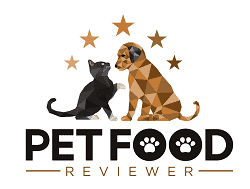What Is Cassia Gum?
Cassia Gum is a processed ingredient that is produced from Cassia Tora’s Gum Seeds which can also be known as Senna Tora. This plant is native to Central America but also grows in other tropical regions where it is often thought of as a weed.
These seeds from this plant are heated, cleaned, and processed at an industrial scale to produce a powder-like substance that can best be compared to flour.
If this flour is then re-hydrated, it forms a gum-like substance known as Cassia Gum. Cassia Gum can then be used as an additive in various processed foods for humans, such as dairy products like Cream Cheese and Ice Cream, and, more importantly, pet food.
Cassia Gum was not even recognized for foods for human or pet consumption until the 2000s and has only recently seen an increase in use as an alternative to Guar Gum, which we will touch on later.
Similar to other gum ingredients, Cassia Gum has a relatively neutral taste and smell, especially once it is mixed with other foods and ingredients, which means many do not realize it is present.
Why Is Cassia Gum In Pet Food?
Cassia Gum is not a common inclusion pet food recipes, but when it is seen, it is present in wet or canned pet food as a binding or thickening agent.
Thickening agents such as Cassia Gum can be critical additions to wet/canned pet food recipes to assist the ingredients in forming a consistent texture and appearance and ensuring that the individual ingredients do not separate from one another during production and packaging.
If binding agents like Cassia Gum are not used in wet/canned pet food, then often these ingredients can separate, which can result in the food being less appetizing or unpleasant.
There are several other binding agents that are commonly used in pet food recipes, including Carrageenan, Xanthan Gum, Guar Gum, as well as starch-based ingredients such as Tapioca Starch or Potato Starch.
Cassia Gum is probably the least common of these six binding agents, with Guar Gum being very popular in some brands and more premium brands often choosing starch ingredients.
Is Cassia Gum Bad For Pets?
There is extremely limited information available on the effects of Cassia Gum on pets, but given that it is approved for use by the FDA and the EU and is only usually present in pet food in tiny quantities, it will most likely not have any serious adverse effects.
Despite this, there are some in the industry that does not approve of the use of any of these additives, including Cassia Gum and believe they are unnatural and do not belong in pet food.
Other similar gum-like ingredients like Guar Gum and Carrageenan do have more research around their use. Some of their potential negative effects center around gut inflammation or other gut symptoms like diarrhea.
However, it is worth noting that in the vast majority of dogs, these side effects would either not be present or considered extremely mild.
You can learn more about these mild side effects in our articles Carrageenan In Dog Food and Guar Gum In Pet Food.
If Cassia Gum sees increased use in pet foods over alternatives like Guar Gum, it is likely that further research will take place, which will give a more conclusive picture of its properties.
Pet Food Brands That Use Cassia Gum
Despite not being hugely popular among pet food brands, there are several that use tiny quantities of Cassia Gum, including some that are very well known.
Some examples include Blue Buffalo, Wellness, American Journey, Merrick, and Natural Balance.
While researching the use of ingredients within dog food recipes, we found that of the 100 most popular wet dog food recipes sold on Chewy.com, only 10 of them contained Cassia Gum.
Comparing this to Guar Gum, which was found in 73 of the 100 recipes, helps to demonstrate that Cassia Gum is less of a mainstream choice of thickening agent.
A great example of the use of Cassia Gum in a pet food recipe is the below ingredient list of Blue Buffalo’s Wilderness Chicken & Salmon Grill wet dog food recipe.
As you can see, Cassia Gum is present alongside several other binding or thickening agents, such as Carrageenan and Guar Gum.
As we mentioned earlier, Cassia Gum is far less common to find in a pet food recipe than the alternatives but is seeing a steady increase in use over the last decade, and we predict this increase will continue.
If you do not want to feed your pet food that contains Cassia Gum, then we would recommend studying the ingredient list of any recipe you are considering closely to ensure it is not present.
If this is challenging or you can not find a recipe with Cassia Gum, we would recommend feeding dry pet food as this would not contain Cassia Gum.
If you need help with this, be sure to check out our Dog Food Guide or our Pet Food Brand Review Index.




